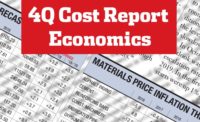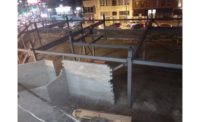Steel and aluminum tariffs remain a hot topic in the construction industry, even as the Trump administration delays them until June 1 for Canada, Mexico and the European Union. Permanent exemptions were granted for Argentina, Australia and Brazil.
“The unemployment rate has just dropped to 3.9%, its lowest level in almost two decades. The economy is moving forward like gangbusters. Why toy with a good thing?”
– Alex Carrick, Chief Economist, ConstructConnect
Amid the uncertainty, the industry is seeking stability, says Charlie J. Carter, president of the American Institute of Steel Construction.
“The structural steel industry is looking for two things as the steel import policy develops,” he says. “Policy that protects American fabricators from even more unfair competition by non-U.S. fabricators [and] clear rules that make us all able to budget projects with certainty.” He adds that the extensions and the country exemptions “seem to work against such clarity.”
Developers agree; many are taking the looming tariffs into consideration as they plan current and future projects.
“All of our structural steel for this project has already been purchased,” says Ryan Moss, on-site project director for McCarthy Cos., on a $280-million campus transformation of Washington University in St. Louis. “All of our specialty steel, particularly the stainless steel, is something we’re going to have to have a long conversation with our suppliers about in June or if the tariffs go into effect at a later date.”
Richard Wood, CEO of Plaza Construction, adds that “what was once a simple cost-benefit analysis is becoming a more difficult analysis.” He notes that with existing project budget pressures, "every time perceived additional costs or uncertainty is tacked on, go/no go decisions become even more difficult.”
While he is “pleased” by the Trump delay, Alex Carrick, chief economist of industry market forecaster ConstructConnect, wonders about the eventual outcome.
“Tariffs when threatened and imposed are sources of uncertainty and cost increases," he says. "The unemployment rate has just dropped to 3.9%, its lowest level in almost two decades. The economy is moving forward like gangbusters. Why toy with a good thing?”






Post a comment to this article
Report Abusive Comment